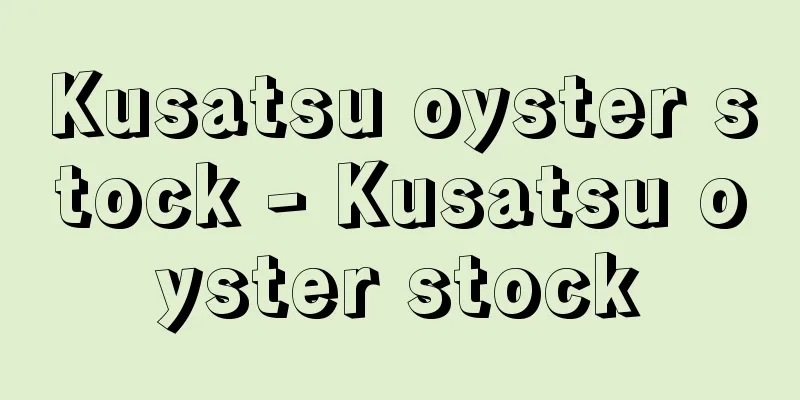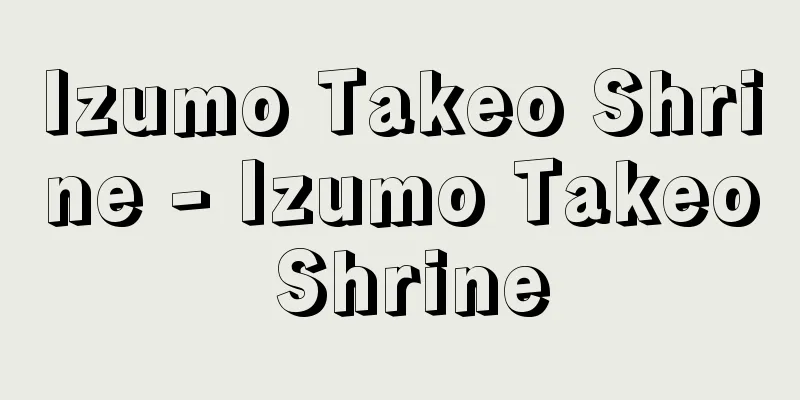Dokyo

|
A monk and politician from the late Nara period. His family name was Yuge no Muraji. He was from Wakae County, Kawachi Province (Wakae, Higashiosaka City, Osaka Prefecture). There are two theories about his origins: he was the son of Prince Shiki (Shikimoto), a son of Emperor Tenji, and he was a descendant of Mononobe no Moriya. The former theory can be found in historical documents from later periods such as the Shichidaiji Nenpyo (Chronological Table of the Seven Great Temples) and Honcho Koin Jounroku (Record of the Imperial Inheritance of the Emperor). The land of Yuge in Kawachi extended to Wakae County and Shiki County, and the theory that he was a descendant of Prince Shiki may have arisen from the fact that he was a native of Shiki. The latter is presumed from the imperial edict dated September 20, 764, in the Shoku Nihongi, which reads, "Seeing this Zen master guarding and serving the Imperial Court day and night, he will succeed the title (Mononobe no Moriya) of his ancestor who served as a minister..." It is unclear whether he was a descendant of Moriya, but he was a Tomo no Miyatsuko of the Yuge clan who belonged to the Mononobe clan. Dokyo is said to have been a disciple of the monk Gien, and in his youth he entered Mount Katsuragi and practiced the Nyoirin method, earning the nickname of Asceticism Unlimited. His first appearance in literature was in the January 747 (Tenpyo 19) Shosoin documents, where he was identified as a novice priest of Roben the Great Master of Todaiji Temple, and it seems he was a disciple of Roben who had only just become a monk. Later, when word of his Zen practice spread, he entered a training hall within the Imperial Court and became a Zen master. He studied esoteric Buddhist scriptures and Sanskrit texts, and was well versed in them. From 761 (Tenpyo Hoji 5) to the following year, 762, when the retired empress Kōken (female empress) was on a visit to Horanomiya Palace in Omi (north of Ishiyama-dera Temple) and fell ill in April 762, Dōkyō practiced the secret Shukuyo ritual to care for her, cured her illness and earned her favor. Emperor Junnin criticized this, and the relationship between the retired emperor and the emperor deteriorated. The retired emperor became angry and returned to Heijō-kyō, became a monk at Hōke-ji Temple, and issued a decree on June 3rd that he would strip the emperor of his supreme power and that he would be in charge of important matters of the state and rewards and punishments. Fujiwara no Nakamaro (Emi no Oshikatsu), who had been manipulating the emperor and holding the government, lost his power. Dōkyō was appointed Shosōzu in 763. On September 11, the following year, 764, Nakamaro plotted a rebellion but was defeated and killed. Kōken deposed Emperor Junnin and re-enthroned as Emperor Shōtoku. Dōkyō was appointed Minister of State and Zen Master on September 20 and took control of the government. In the intercalary month of October 765 (Tenpyō Jingo 1), during the Emperor's visit to Yuge-dera Temple, he was appointed Grand Minister of State and Zen Master. In 766, he was appointed Dōō and his monthly salary was equivalent to that of an offering to the Emperor, reaching the highest position a subject could attain. Dokyo's government policy was one that emphasized Buddhism, and he abolished the Hoyo-ji and established the Hojo-ji, and forbade all provinces under the emperor from raising and hunting hawks, dogs, and cormorants, and from offering meat and fish as sacrifices. He outdid Todai-ji and built Saidai-ji and Sairyuji temples, spending a huge amount of money on them. He paid special attention to the restoration and repair of the provincial temples, and frequently invited the emperor to visit the various large temples. In 765, he completely forbade the nobles from cultivating land, but allowed temples to do so, and allowed peasants to cultivate one or two cho of land. In 767 (Jingo Keiun 1), he oppressed the nobles by taking the merit and rank fields of the royal vassals of Awa Province and distributing them as kubunden. He built Iji Castle and Momonou Castle in Mutsu Province, and Ito Castle in Chikuzen Province, and repaired Mizuki Castle, strengthening the defenses of the borderlands. People from all over the country tried to curry favor with Dokyo, reporting miracles and auspicious events and making offerings, but he also schemed on his own, advertising that the heavens were blessing Dokyo's virtuous rule. The biggest example of this was the Usa Hachiman oracle incident. In 769, Usa Hachiman's oracle stated, "If Dokyo is allowed to ascend to the heavenly throne, the world will be at peace," causing unrest in the Imperial Court. Since the Dazai no Suke at the time was Dokyo's younger brother, Kiyohito Yuge (date of birth and death unknown), it is believed that this oracle was staged in collusion with the Dazai no Suke Nakatomi no Suge no Asomaro (date of birth and death unknown) and the priests of Usa Hachimangu Shrine. The Emperor sent Kiyomaro, the younger brother of Hokin-ni (Wake no Hiromushi), whom he trusted, as an imperial envoy to Usa to confirm the oracle. Kiyomaro returned to the capital and denied the oracle, so Dokyo was unable to ascend to the throne. Kiyomaro may have had the support of aristocrats such as the Fujiwara clan behind him. Dokyo built Yuge Palace in his hometown of Kawachi Yuge, called it Saikyo, renamed Kawachi Province Kawachi Shiki, and visited the Emperor three times. In 770 (the 1st year of the Hoki era), during a visit to the emperor, the emperor fell ill and passed away in August. Dokyo was demoted by the crown prince, Prince Shirakabe (Emperor Konin), to the position of head priest of Yakushi-ji Temple in Shimotsuke Province. He died here on April 7, the 3rd year of the Hoki era, and was buried as a commoner. [Kenichi Yokota September 19, 2017] "Dōkyō" by Kenichi Yokota (1969, Yoshikawa Kobunkan) [References] | | | | | | |Source: Shogakukan Encyclopedia Nipponica About Encyclopedia Nipponica Information | Legend |
|
奈良後期の僧侶(そうりょ)、政治家。姓は弓削連(ゆげのむらじ)。河内(かわち)国若江郡(大阪府東大阪市若江)の人。出自に天智(てんじ)天皇皇子志貴(しき)(施基)親王の子説と、物部守屋(もののべのもりや)子孫説の2説がある。前者は『七大寺年表』『本朝皇胤紹運録(ほんちょうこういんじょううんろく)』など時代の降(くだ)る史料にみえる。河内弓削の地が若江郡、志紀郡にわたり、志紀(の人ということ)から志貴親王後胤説が出たものか。後者は『続日本紀(しょくにほんぎ)』天平宝字(てんぴょうほうじ)8年(764)9月20日条の詔に「此禅師ノ昼夜朝廷ヲ護リ仕奉ルヲ見ルニ先祖ノ大臣トシテ仕奉リシ位名(物部守屋)ヲ継ガント……」とあるより推定される。守屋の子孫か否かは不明であるが物部氏に属した弓削部の伴造(とものみやつこ)であった。 道鏡は義淵(ぎえん)僧正の弟子といわれ、若年に葛木(かつらぎ)山に入って如意輪(にょいりん)法を修して苦行無極と称せられた。文献上初見は747年(天平19)1月正倉院文書に東大寺良弁(ろうべん)大徳御所使沙弥(しゃみ)とあり、良弁の弟子でようやく得度(とくど)したばかりであったらしい。その後禅行が聞こえて宮中内道場に入り禅師となった。密教経典と梵(ぼん)文を研究し、これに通じた。761年(天平宝字5)より翌762年にかけ孝謙(こうけん)上皇(女帝)が近江(おうみ)保良宮(ほらのみや)(石山寺北方)に行幸滞在中と、762年4月病んだ際に、道鏡が宿曜(すくよう)秘法を修して看病し、病を癒(いや)して寵幸(ちょうこう)を得た。それを淳仁(じゅんにん)天皇が非難したので、上皇と天皇との間が悪化した。上皇は怒って平城京に還(かえ)り、法華寺で出家、6月3日詔して天皇の大権を奪い、国家の大事と賞罰の二事は朕(ちん)が行うと宣した。天皇を動かして政権を握っていた藤原仲麻呂(恵美押勝(えみのおしかつ))は権勢を失った。道鏡は763年少僧都(しょうそうず)に任ぜられた。翌764年9月11日仲麻呂は謀反を企てたが敗れて殺された。孝謙は淳仁天皇を廃して称徳(しょうとく)天皇として重祚(ちょうそ)した。道鏡は9月20日大臣禅師に任ぜられて政権を握り、765年(天平神護1)閏(うるう)10月、天皇弓削寺行幸の際、太政(だいじょう)大臣禅師に任ぜられた。766年法王に任じ、月料は天皇の供御(くご)に准(じゅん)ぜられ、人臣最高の地位を極めた。 道鏡の政治は仏教重視の政策で、放鷹(ほうよう)司を廃して放生(ほうじょう)司を置き、天下諸国に鷹(たか)、犬、鵜(う)を飼い猟をすること、肉、魚を御贄(にえ)として奉ることを禁じた。東大寺の向こうを張り西大寺、西隆寺を建立し莫大(ばくだい)な財を費やした。国分寺の復興修造に意を用い、諸大寺にしばしば天皇の行幸を仰いだ。765年貴族の墾田をいっさい禁じたが、寺院のそれは認め、百姓の1、2町の開墾は許した。767年(神護景雲1)阿波(あわ)国の王臣の功田、位田を収めて口分田(くぶんでん)として班給するなど、貴族を抑圧した。陸奥(むつ)国に伊治(いじ)城、桃生(もものう)城、筑前(ちくぜん)に怡土(いと)城を築き、水城を修理するなど辺境の防備を固めた。各地から道鏡におもねり奇跡、祥瑞(しょうずい)の報告、献上が相次いだが自分からも策謀し、彼の徳政を天が嘉(よみ)すると宣伝した。その最大のものが宇佐八幡(うさはちまん)神託事件である。769年「道鏡を天位に即(つ)かしめば、天下太平ならん」との宇佐八幡の神託があり、宮廷が動揺した。この神託は、当時大宰帥が道鏡の弟弓削浄人(きよひと)(生没年不詳)であるところから、大宰主神(かんづかさ)中臣習宜阿曽麻呂(なかとみのすげのあそまろ)(生没年不詳)と宇佐八幡宮の神官らとが共謀して演出したと考えられる。天皇は信任する法均尼(ほうきんに)(和気広虫(わけのひろむし))の弟清麻呂を勅使として宇佐に遣わし、神託を確認させた。清麻呂は帰京、神託を偽りとしたので道鏡は天位に即けなかった。清麻呂の背後には藤原氏ら貴族の援助があったかもしれぬ。道鏡は郷里河内弓削に由義宮(ゆげのみや)を建設、西京と号し、河内国を河内職と改め、三度行幸を仰いだ。770年(宝亀1)行幸中、天皇は発病、8月崩御し、道鏡は皇太子白壁(しらかべ)王(光仁(こうにん)天皇)により造下野(しもつけ)国薬師寺別当に左遷された。宝亀(ほうき)3年4月7日ここで死に、庶人として葬られた。 [横田健一 2017年9月19日] 『横田健一著『道鏡』(1969・吉川弘文館)』 [参照項目] | | | | | | |出典 小学館 日本大百科全書(ニッポニカ)日本大百科全書(ニッポニカ)について 情報 | 凡例 |
<<: Children's activities - tong xing (English)
Recommend
Nishikawa Jingorō
This name was passed down to the second and ninth ...
Gesellschaft für Wirtschafts- und Sozialwissenschaften
…The Society carried out policy discussions and p...
Accommodation paralysis
Accommodation is the process of increasing the thi...
Fujiwara no Otsugu - Fujiwara no Otsugu
Year of death: 23 July 10 (22 August 843) Year of ...
Uji Issaikyoe - Uji Issaikyoe
…In Japan, the first copy of the entire Buddhist ...
Pony - Poney (English spelling)
An animal of the order Perissodactyla of the clas...
Kaup-Davenport index - Kaup-Davenport index
... Diagnosis is based on weight loss, apparent t...
Kasugai Okame - Kasugai Okame
...The storyteller Hattori Shin (1880-1974, whose...
Villach (English spelling)
A small city in Carinthia in southern Austria. Loc...
Adigei
...A general term for the three ethnic groups of ...
Kachin State (English spelling)
One of the seven states in the Union of Myanmar. A...
Cloaca Maxima
…In ancient Rome, systematic urban development le...
Heart - Mind
The mind is the function or seat of so-called sen...
Stabilization method - Anti-Ikaho
...To eliminate residual hypos in photosensitive ...
Azolla japonica (English spelling) Azollajaponica
…[Masahiro Kato]. . . *Some of the terminology th...









